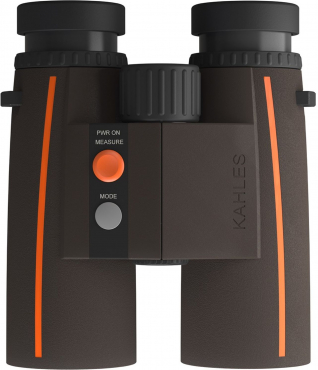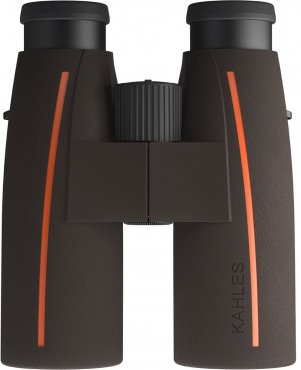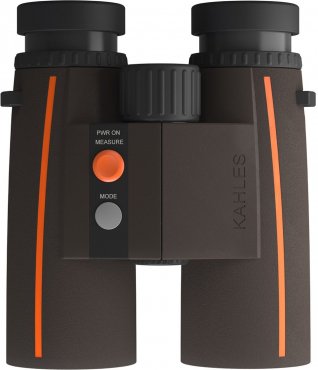Binoculars by KAHLES
Whether for hunting, as a passionate nature lover, or sport shooter - binoculars are indispensable in the equipment. Of course, it should be a product that convinces. With top-quality workmanship, perfect handling and excellent imaging performance. If you are looking for such a companion, you will definitely come across binoculars from the Austrian company KAHLES. On the market for binoculars and rifle scopes, KAHLES stands for a focus on the essentials: User-friendly design and operation, highest quality materials and uncompromising functionality. "We share the passion and professionalism of ambitious sport shooters and hunters," the manufacturer describes on its website.
Magnification, diameter, glass quality-what really counts
.Whoever takes a close look at binoculars and their characteristics will notice: There are a lot of numbers, features and designs and the choice seems huge. Here it is helpful to approach the optimal model with a few key data. Basically, five criteria play an important role when buying binoculars.
The weight
The binoculars should not be too heavy to take along on hikes or hunts, and they should be able to be worn around the neck for a longer period of time without causing neck pain. In short, it is extremely important to consider the weight of the binoculars. Depending on the area of use, there are different requirements for the binoculars, so it is important to find out for what purpose the binoculars are to be used. If you want to go on longer hikes with your binoculars and observe nature and animals, you should ideally go for lightweight binoculars. A heavy pair of binoculars would probably often be left at home - and it's really too bad for that. Nevertheless, a certain weight is an advantage. The binoculars can then be held more steadily and the subject can be seen more clearly and sharply. A good middle ground is a weight between 700 and 1000 grams. This way, the binoculars are not too heavy during transport and can still be held securely and steadily.
The magnification factor
It is precisely because many manufacturers already advertise the magnification factor in the model name that it is tempting for many users to strive for the highest possible magnification. But here, too, it is important to consider the intended use. Binoculars with a high magnification factor often cannot be held steady in the free hand, resulting in a blurred image. As a rule, magnifications up to a maximum of 10x are sufficient for most nature and wildlife observation. For higher magnifications, it is advisable to use a tripod in order to achieve a blur-free result.
The field of view
The "field of view" indicates the area that can be covered by looking through the binoculars - without tilting the glass. If you point the binoculars at the edge of a forest 1000 m away and look across a width of 120 m, the binoculars have a field of view of "120 m at 1000 m". The size of the field of view indicates how many metres of terrain at 1000 m can be seen through the binoculars. Sometimes the "angle of view" or "objective angle of view" is also given, which can be e.g. 6°. The field of view depends on the magnification; small magnifications generally have a larger field of view than high magnifications. When comparing different binoculars, therefore, only compare glasses with the same magnification. Very small fields of view give the impression of tunnel vision. There is a lot of black on the outside, and only in the centre does the small image area appear.
.The exit pupil
The so-called exit pupil or exit aperture is calculated by dividing the lens diameter by the magnification factor. You can think of the exit pupil as a beam of light that is a certain size and falls directly through the pupil onto the optic nerve, where it provides the image. As soon as it gets darker, the pupil opens a little more so that more light can enter. The larger the exit pupil, therefore, the more suitable binoculars are for poor light conditions. An exit pupil of 4 millimetres is recommended for normal use. For hunters who prefer to be out and about at twilight, however, the exit pupil should be at least 6 millimetres.
.The glass
Lens processing and the types of glass used have a major influence on the image quality of binoculars. Depending on the size of the binoculars, the incident light must pass through about eight to twelve centimetres of glass before it reaches the viewer's eye. Thus, several factors are important for good quality. Homogeneous glass quality ensures optimal imaging quality. The precise manufacture of the mechanical and optical components and a high-quality coating of the glass support optimal light transmission. Additional factors such as the use of natural rubber for allergy sufferers or even waterproofing enhance the user experience enormously.
KAHLES - Optimum quality and operation as a claim
The binoculars of the Austrian company KAHLES set their own standard in terms of quality and user experience. In 1898, Karl Robert Kahles founded the KAHLES company, which has since become part of the SWAROVSKI Group, through the merger of two companies. Since the company's foundation, Kahles' claim has remained to produce the highest quality instruments for hunters, sport shooters and nature lovers and to support them in their daily work with their innovative and ideally matched products. In the meantime, the KAHLES product catalogue offers rangefinders and professional thermal imaging devices in addition to binoculars and target optics.
KAHLES Helia 8x42
With the Helia 8x42, KAHLES offers binoculars that combine high-quality workmanship, top ergonomics and first-class imaging. The binocular features a lightweight and balanced design, offering application possibilities for hiking and hunting, from wildlife observation to nature viewing. In addition to the special construction, which guarantees not only water resistance but also enormous robustness, the Helia 8x42 also scores with noiseless accessories that have been specially manufactured for universal use. A wide field of view, an optimal magnification range and the use of the latest, highest-quality materials promise an ideal operating experience.
KAHLES Helia RF 10x42
These binoculars combine first-class optics with ideal brilliance with reliable distance measurement up to 1,500m on targets relevant to hunting. Optimal operation, coupled with functions such as the scan mode for continuous focusing and the patented EAC function, which enables measurement of simple targets up to 4,500m thanks to angle correction, are just two of the numerous highlights. An ambient temperature and barometric pressure display are also part of the binoculars' equipment, as is an improved battery life that can provide up to 4,000 measurements. Thus, the binoculars offer ideal possibilities for professional use in hunting.
KAHLES Helia Rangefinder RF-M 7x25
Intuitive operation, an ergonomic design and reliable target detection up to 2000m. The Helia RF-M 7x25 rangefinder leaves nothing to be desired. Simple menu navigation and an overview of important parameters through an energy-saving and easy-to-read OLED display complete the range of functions. By using the patented EAC function, an integrated angle correction is on board. In addition, the rangefinder is characterised by an unusually high edge sharpness and a large field of view.



Simply subscribe and benefit as a newsletter recipient every week: